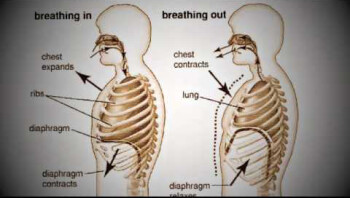To get the best possible vocal performance (and to avoid breaking your voice during the first song), singers should warm up, just like sportsmen do. Many different schools offer different techniques to achieve this, but considering it's your body we are talking about here, you should try to find out what works best for you! Nevertheless, here are some pointers for you to start gently and calmly!
Cartilages, muscles, ligaments… Singing means operating an extremely complex system that allows us to produce a vocal melody. To keep it simple, let’s just say that the adductor, abductor and tensor muscles in the larynx (also called voice box) make cartilages move. The ligaments attached to these cartilages are called vocal folds (or vocal cords). The vocal folds come together or separate to allow us to modulate our voice. As you can see, it’s real sport! That’s why it’s strongly recommended ─ or even mandatory ─ to prepare your voice with a proper warm-up before putting this wonderful system to the test during wild rehearsals.
Get fit!
To get your muscles in good condition, you must progressively increase their temperature. In fact, higher temperatures cause blood vessel dilatation, thus allowing better irrigation, increasing muscle elasticity by 20% and improving articular amplitude and smoothness. Moreover, nerve impulses spread faster in warm tissues, improving body coordination.
Finally, from a psychological standpoint, a good vocal warm-up allows you to concentrate by focusing on your center of gravity and your breathing. This will make you feel more confident and relaxed, and you will be able to optimize your possibilities. Sounds good doesn’t it?
In the field
To start, here is a 10-minute workout that will allow you to go from normal breathing to real vocals in four steps of 2–3 minutes each. This will help you to understand the continuity of the process while reaching the proper breathing rhythm and warming up your vocal system.
Stand firmly on the ground, as if you wanted to root yourself, while keeping your pelvis and knees open. Try to find a comfortable, relaxed and stable body position. Get energy from the ground, from the center of the earth!
1 – The first step consists in simply breathing through the abdomen, which means you have to lower the thoracic diaphragm to leave some room for the lungs. This is called abdominal breathing.
A whole book would be necessary to explain the process, and still you can discover new subtleties and movements even after several years of vocal training. Start relaxing yourself (this is the basic rule for the whole process) by trying to move the top of your body as little as possible while breathing in and focusing your energy on your stomach. It ought to feel like if your were gently stretching and releasing an elastic strap.
2 – Always keep the same breathing rhythm and try to keep the same sensation described above while producing the sound of a deflating tire (pssss…). Pay attention not to clench your teeth and let the tip of your tongue gently push your lower incisors. The resulting sound must be as smooth as possible. This way you create a continuous pressure on your thoracic diaphragm, which is crucial to produce sound in a regular manner.
3 – Now, let the vocal folds come into action! Keep your lips closed and try to open your mouth as wide as possible (imagine that you have to yawn but don’t want anybody else to notice). Say “smoom” while gently pushing the tip of your tongue against your lower incisors, always maintaining the same rhythm and sensation as in both previous steps. The “sm” sound at the beginning must produce a precise attack, while the “oom” allows you to find the best vibratory areas. We’ll come back to this in another article. Now, do as if you would gargle with the sound by moving your jaws and your tongue slowly ─ always paying attention to the resulting differences. Choose a different note with each exhalation but be sure not to move too far away from the middle of your vocal range or tessitura (neither too low nor too high).
4 – Finally, open your lips while keeping the same relaxed yawning position from the former step, but release your tongue so that it relaxes, and sing “saannnng”. The “s” corresponds to the attack of the sound and it must be as precise as possible. The “aann” must sound very open and allow the vibrations to grow. Try to get the maximum flexibility, without straining, and try to imitate the foghorn of a ship in the early morning. Once again, try this with different notes, without attempting any feat, and always keep moving your mouth slightly.
This was the first part of your vocal warm-up. It’s like a wake-up call for your vocal folds, as well as for your breathing system, that also helps you to relax yourself and focus on your vocals. It will allow you to start singing in good vocal condition, even if you have little time. More to come in a future article…



